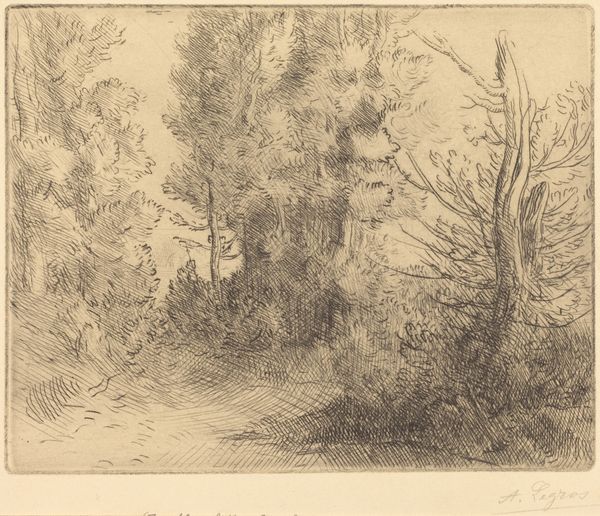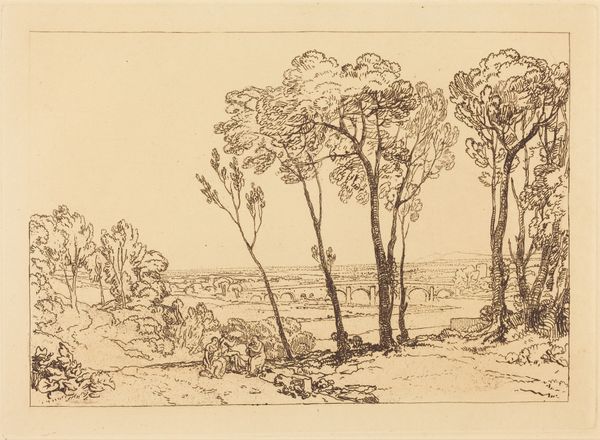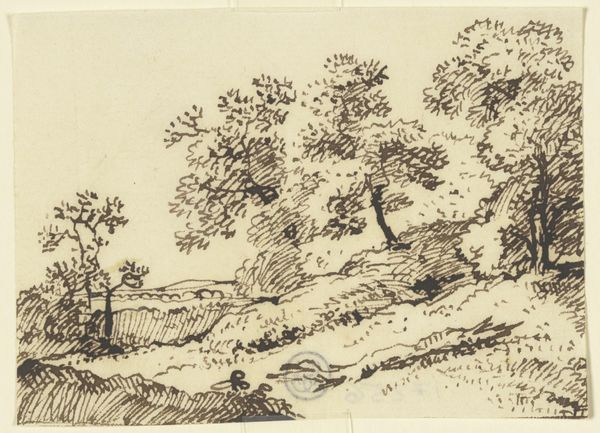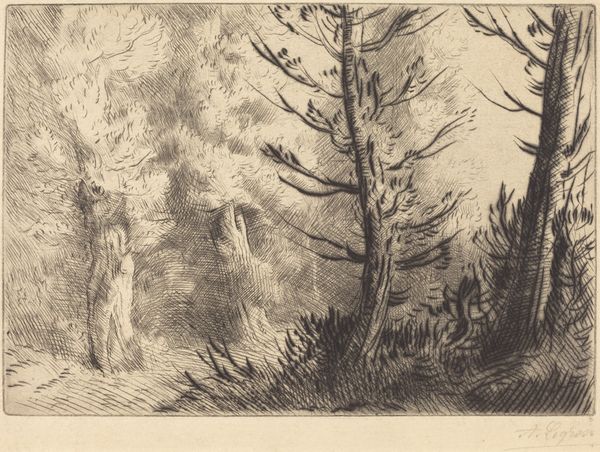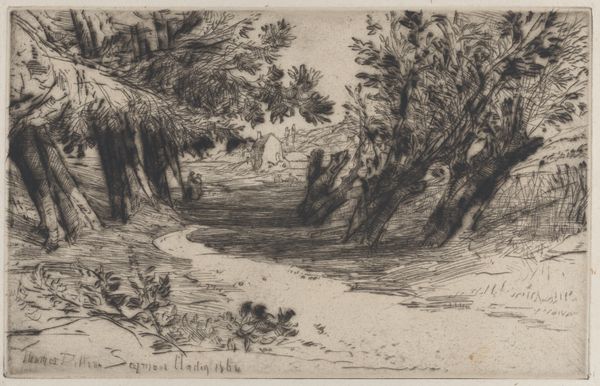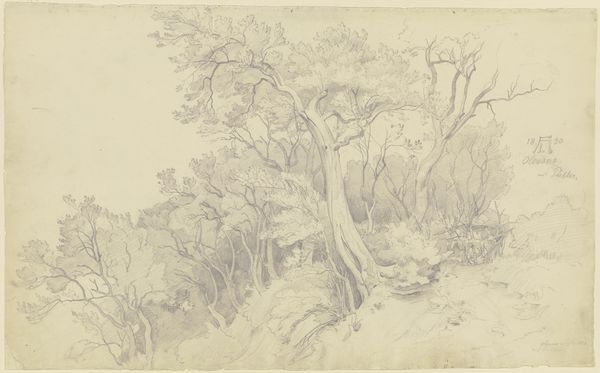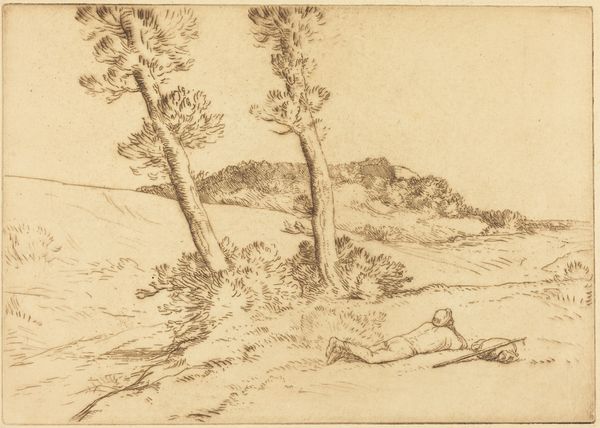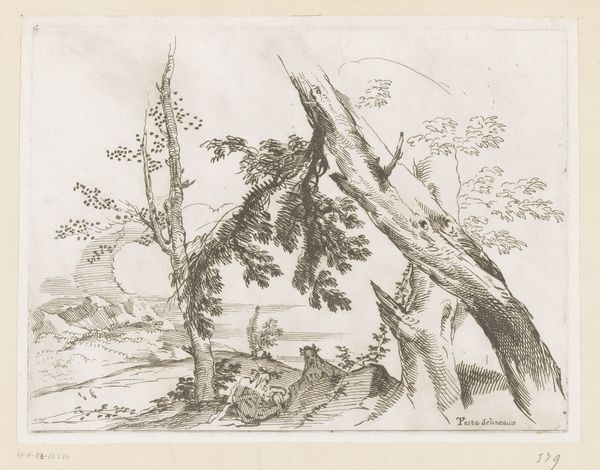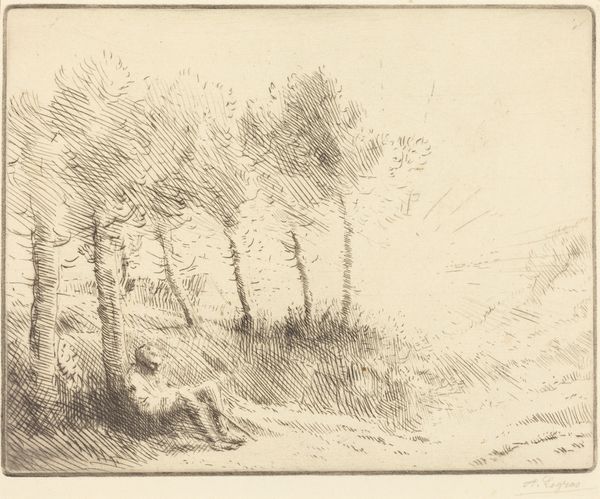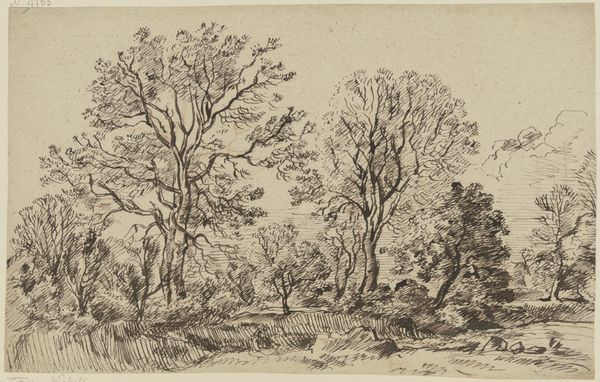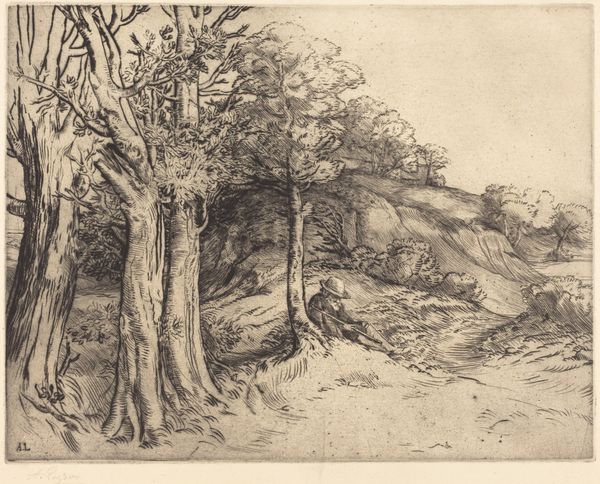
drawing, print, etching, ink
#
drawing
# print
#
etching
#
landscape
#
ink
#
line
#
realism
Copyright: National Gallery of Art: CC0 1.0
Curator: Welcome. Before us we have "Willows," or "Les Saules" as Legros titled it, an etching in ink on paper. Editor: It's stark, wouldn't you say? Somber, even. Those bare branches look like skeletal fingers reaching for the sky. Curator: Yes, the linear quality of the etching technique lends itself to that feeling of sparseness. You can almost feel the pressure of the etching needle, creating those deliberate, controlled lines. It speaks to a specific artistic labour and its effects. Editor: The willows themselves are laden with cultural baggage, aren't they? In art, they're traditionally associated with mourning, with loss. That weeping form—it's almost a universal symbol of sorrow. I see a landscape of lament here. Curator: True, but let’s also consider the material aspect of the print. The choice of etching allows for multiple reproductions. Legros, coming from a working-class background, likely saw printmaking as a way to democratize art, to make it more accessible beyond the elite art market. Editor: I hadn’t thought of that. It shifts the narrative from personal grief to something more...communal? As though sorrow itself could be disseminated, shared among the masses. Curator: Perhaps. Or simply offering affordable art for the common person. His work was part of a burgeoning print market. Think of the engravers and printers; their skills also contributed significantly. These are the often overlooked agents. Editor: Fascinating to consider how material constraints and artistic intent intertwine! And how we can look beyond traditional iconographic interpretations by examining the socioeconomic framework in which an artwork came to be. Curator: Precisely. Editor: Thank you, Alphonse Legros. This certainly gave us plenty to think about! Curator: Indeed. The willows stand, starkly rendered, prompting us to consider art's place within broader economic and emotional landscapes.
Comments
No comments
Be the first to comment and join the conversation on the ultimate creative platform.

